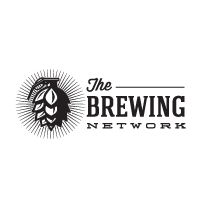(Philippe Cledat, Bière Magazine, date tbc)
Lotte Peplow, the Brewers Association’s American Craft Beer Ambassador for Europe, takes a deep dive into hop usage in American craft beer…..
Excitement is mounting amongst American craft brewers as the annual hop harvest in the United States approaches. It’s not only brewers who are excited, beer lovers around the world wait in heady expectation for yet more innovative, incredible tasting American craft beers packed full of the highest quality raw materials, to be launched.
In the 1980s American craft beer innovation and creativity kickstarted the craft beer revolution that we now see emulated all over the world. Bold, full-flavoured, hop forward beers ‘wowed’ the beer drinking public and today ground-breaking, style-diverse, high quality American craft beers can be found throughout Scandinavia. Examples are worth seeking out because American craft beer regularly wins top honours at high profile beer competitions around the world that are judged by international panels of experts.
The proximity of many American craft brewers to hop fields allows them to spend time with the hop growers and in the hop yards before, during and after harvest to constantly evaluate hops and select what they need. Tim Matthews, VP of Global Brewing for the CANarchy Craft Brewery Collective whose brand portfolio includes Oskar Blues from Longmont, Colorado and Cigar City Brewing from Tampa, Florida, explains: “Interaction with growers is a huge focus and all brewers should have constant communications with their suppliers. We spend a lot of man hours getting all over the place and having face to face time with our suppliers so they understand what we’re asking for and what is the most economically sustainable strategy to achieve a product we want and that works for everyone.
“You’ve got to understand what makes a hop tick,” he says. “Traceability is key. All hops have a QR code giving age, the Hop Storage Index and how it has experienced processing. We smell them, touch them, break them up – we don’t just want essential oils, terpenes, and alpha components, nowadays we want glycosides and especially polyphenols (molecules most often involved in haze formation).”
American craft brewers’ proximity to desirable hops in the United States means that only 13.1% of hops used in the U.S. are purchased from abroad. What’s more, the amount of hops being used by American craft brewers is increasing – during the last 10 years the average amount of hops used by craft breweries increased 87% to 1.72 pounds per barrel (PPB) in 2019 with a slight dip to 1.46 PPB in 2020. In 2020 143 hop varieties were used by American craft brewers, nearly double the quantity of 2009*. The combination of increased hop usage and a wider hop variety allows brewers to craft ground-breaking new beers that push the boundaries of taste and flavour. American craft brewers have also developed packaging expertise to minimize oxygen in beer and preserve flavour for longer. This is essential when beer is exported overseas.
Hops are an agricultural product and a single hop varietal varies widely from year to year, farm to farm depending on terroir, weather and conditions. Even at the highest ‘quality’ the hop profile will change hence why brewers visit the hop farms regularly to maintain grower relationships, select hops and adjust recipes.
Sierra Nevada Brewing Co, from Chico, California is one of the pioneers of the American craft brewing revolution and was instrumental in changing the beer drinkers’ perception of American craft beer from the 1980s onwards. Their flagship beer, Sierra Nevada Pale Ale using the cascade hop, was one of the first examples of American craft beer to be exported overseas.
Scott Jennings, Innovation Brewmaster for Sierra Nevada Brewing Co, adds: “It’s very important to build close relationships with our hop farmers and we track variations in the hop character along with them. We visit several times a year – just before the harvest to get a sense of the quality availability, then again at harvest time where we can make selections of the varieties that harvest early and once again after the harvest so we can select the late harvested varieties.”
But what happens when it comes to crafting a new beer? Does the recipe come first or the hop selection? Scott Jennings explains: “It goes both ways depending on the source of the inspiration! Sometimes a clear mental flavour profile is the way forward other times there is a beautiful new hop that needs a beer to go in so we build it that way.”
American craft brewers are renowned the world over for their innovative use of raw materials and brewing techniques. Stone Brewing Co from Escondido, California has a two-pronged approach to hop selection – ‘core beers’ and ‘hop innovation.’ Joel Grosser VP Brewing Operations and Brewmaster at Stone explains: “Core beers hop selection is focused on consistency. We select lots that deliver the exact same flavour profile year over year and want every Stone IPA to be the same amazing experience no matter where you have it. We accomplish this through our relationship with the growers and suppliers.
For ‘hop innovation’ we’re looking for something new and exciting. Innovation is part of the Stone DNA and staying at the forefront of hop varieties and flavour is critical to our success.”
By way of an example, Jeremy Moynier, Senior Manager Innovation and Supply Chain for Stone, adds: “We had an interesting discussion about a particular newer hop that has gained a lot of attention recently and is still expanding to meet demand. We are split on this hop but what intrigues me is that it’s different. More strawberry and herbal notes than the tropical and citrus forward hops that have gained acclaim in the last few years. We look at what you can blend it with – other hops, yeast, other ingredients to make a really special beer. This is part of Hop Innovation.”
American craft beer is now available in dozens of countries internationally and in 2019 exports were valued at $69 million. Canada is the largest global export market for American craft beer accounting for 25.8% of all exports, followed by the UK with 11.9%, Sweden with 6% and the rest of Europe with 11%.
Top Ten U.S. Hop Varieties by Acreage 2020
1. Citra
2. CTZ
3. Mosaic
4. Simcoe
5. Cascade
6. Centennial
7. Pahto
8. Amarillo
9. Chinook
10. El Dorado
Visit (insert URL) to find out more about American craft beer in France and where it is available near you.
*Brewers Association Hop Usage Survey 2020. The Brewers Association undertakes an annual hop usage survey to help hop growers to make important planting decisions. Members providing input since 2007 have shown the market completely shift from 20% to 80% aroma acres.
www.brewersassociation.org
Lotte Peplow is the American Craft Beer Ambassador for Europe for the Brewers Association and is based in London, UK. She is a Certified Cicerone®, BDI accredited Beer Sommelier, beer writer, international beer judge, beer communicator, home brewer and ambassador for American craft beer throughout European export markets.
-ends-
About the Brewers Association The Brewers Association (BA) is the not-for-profit trade association dedicated to small and independent American brewers, their beers and the community of brewing enthusiasts. The BA represents 5,500-plus U.S. breweries. The BA’s independent craft brewer seal is a widely adopted symbol that differentiates beers by small and independent craft brewers. The BA organizes events including the World Beer Cup®, Great American Beer Festival®, Craft Brewers Conference® & BrewExpo America®, SAVOR™: An American Craft Beer & Food Experience, Homebrew Con™, National Homebrew Competition and American Craft Beer Week®. The BA publishes The New Brewer® magazine, and Brewers Publications® is the leading publisher of brewing literature in the U.S. Beer lovers are invited to learn more about the dynamic world of craft beer at CraftBeer.com® and about homebrewing via the BA’s American Homebrewers Association® and the free Brew Guru® mobile app. Follow us on Facebook, Twitter and Instagram. www.brewersassociation.org For further information please contact: Lotte Peplow : lotte@brewersassociation.org on +44 (0)7973 698 414








